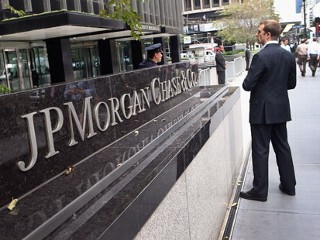It seems the more it changes, the more it’s the same.
Conflicts-of-interest and charging excessive fees seem to be part of the DNA of major banks (such as Deutschbank and its $10 billion money laundering scheme out of Russia and Wells Fargo), insurance companies and investment firms when it comes to selling investment products to 401(k) and pension plans.
In the latest case, a suit alleges that JPMorgan Chase (with assets of US $2.424 trillion, as of 2016), took advantage of thousands of unsuspecting individual investors at numerous 401(k) plans. Note that those charged in the suit also include not only top executives and the board at JPMorgan Chase, but also the people who are supposed to oversee the interests of their own employees, specifically human resources people at the companies that sponsored the 401(k) plans.
“This failure to adequately review the investment portfolio of the plan led thousands of plan participants to pay higher than necessary fees for both proprietary investment options and certain other options for years.”
Here is the story taken directly from the solid reporting provided by John Manganaro and the editors@assetinternational.com. This story was published, Jan. 26, 2017.
“Fiduciaries of the internal JPMorgan Chase 401(k) plan are facing a proposed class-action suit, brought by an employee who argues the retirement plan’s fees were not properly controlled and that conflicts of interest damaged net-of-fee performance.
“The suit, filed in United States District Court for the Southern District of New York, names as defendants JPMorgan Chase Bank, as well as the company’s board, various benefit committee members, human resources executives and others.
“The complaint echoes allegations that are by now very familiar to retirement plan industry professionals: ‘Plan’s fiduciaries breached their duties of loyalty and prudence to the plan and its participants by failing to utilize an established systematic review of the investment options in its portfolio to evaluate them for both performance and cost, regardless of affiliation to JPMorgan Chase …. This failure to adequately review the investment portfolio of the plan led thousands of plan participants to pay higher than necessary fees for both proprietary investment options and certain other options for years.'”
Specifics of the Case
It is certainly important to read this story to see what the plaintiffs charge, but one important charge is that the funds were invested in proprietary JPMorganChase mutual funds, including some managed by BlackRock. In one instance, the plaintiffs said they were charged about 1% to 1.2% in an annual expense ratio fees, but there were similar funds offered Vanguard, T. Rowe Price, and Prudential “that would have offered comparable or superior investment management services with costs that were at least 30% lower than those charged by the [proprietary option]. Even less expensive collective trust and separate account options were available.”
It is important to note that the Department of Labor’s historic application of the fiduciary standard to 401(k) plans is being challenged by the new Trump administration. This lawsuit is specifically what the DOL’s new regulation would have challenged, yet it has been the target of millions of dollars in anti-average investor lobbying from the largest lobby in Washington.
It is also an insight into the everyday business dealing of this huge global operation and how it cannot help itself from preying on its own customers, and probably, its own employees. And as numerous other similar lawsuits have shown, this behavior is not unique to JPMorgan Chase.
Further, this latest lawsuit is merely a prelude to what will happen if the new DOL fiduciary standard is repealed or delayed in its implementation.
The DOL Fiduciary Rule Synopsis
The full story about the history and impact of the historic rule is in the book, How 401(k) Fees Destroy Wealth and What Investors Can Do to Protect Themselves,” but here is a synopsis of the rule:
–The rule was blocked by the industry and took eight years to be introduced.
–It would become fully implemented in April 2017.
–It is intended to protect individual investors from high-fee, expensive financial products sold by mutual fund and insurance companies.
–The fiduciary rule is also known as the conflict-of-interest rule.
–The DOL rule was proposed after years of complaints and lawsuits over the sale of expensive,inappropriate investment products to unsuspecting people in 40199k) plans.
-The financial services industry lobby, the most powerful in Washington, has filed numerous lawsuits again this new pro-investor rule. The U.S. Chamber of Commerce, representing the largest global banks, and insurance and financial trade groups have filed seven lawsuits against the rule and helped block it for years.
–Here is why the financial industry hates the DOL rule: The global consulting firm of McKinsey & Co. said the DOL rule “constitutes one of the largest shocks to the wealth management industry in over 40 years. It strikes at the core of the business model–financial advisor compensation, the range of products, and the nature of advice itself.”
The bottom line here is that the financial services industry lobby wants to preserve the old saying, “Never give a sucker (aka the individual investor) an even break.”











